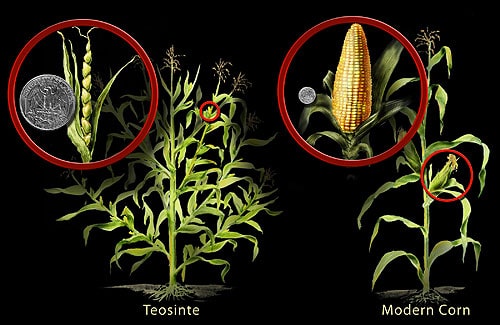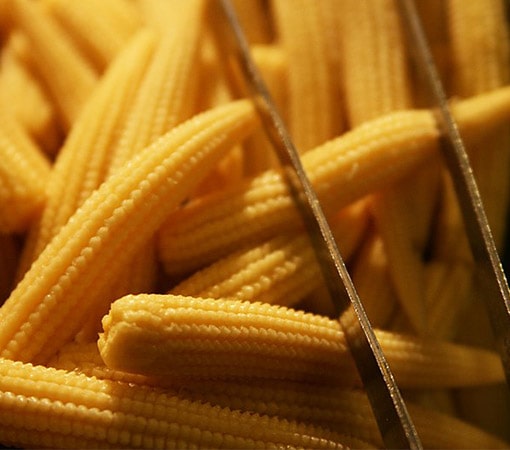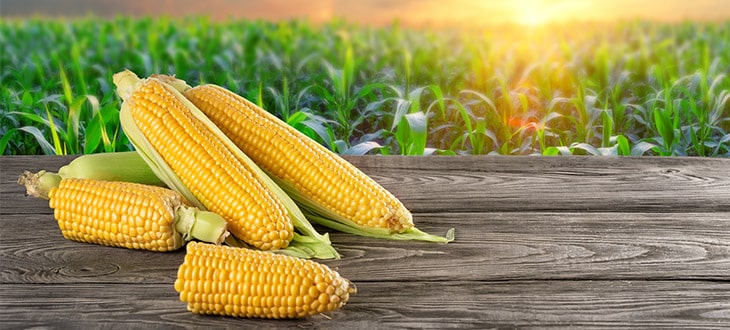Is Corn Man-Made?
Is corn man-made or found naturally in its current form? The answer to this question and more about the history of corn and its evolution in this article.
Corn is a favorite for many and can be used in a variety of dishes. Corn is loved for its versatility and for the fact that it’s cost-effective and easy to get. But what many people might not know is that corn is actually a man-made vegetable that was developed by people more than 7000 years ago and isn’t even remotely close to the corn that we know and love today.
Believe it or not, corn does not exist naturally in the wild and can only continue to thrive and evolve with the help of human hands.
Contents
Evolution of Corn
Researchers have determined that corn was first harvested by people living in Mexico, who developed it from a wild species of grass called teosinte or zea.

The fruit of this plant was very different than the corn we all know. This did not have the bright yellow kernels that we see in corn today. In fact, teosinte had small kernels that were spread apart as opposed to being side by side.
Over time, teosinte was altered via selective breeding and eventually began to grow bigger and bigger and drastically changed its structure. Thousands of years later, corn continued to grow in size.

Even to this day, scientists continue to find ways to change corn to make it withstand things such as drought.
When the Europeans began their colonization, they took a particular liking to corn and brought it back to be grown all over different parts of Europe. Corn became a staple in European farms because of the fact that it benefitted other vegetables that were growing in the garden at the same time.
For example, corn stalks were helpful in giving bean vines the support they needed to continue to grow as well as providing shade for squash and other vegetables that needed protection from the sun to stay moist.
Corn was also helpful in keeping animals out of the fields, thanks to its fuzzy husks that weren’t exactly appetizing to hungry creatures.
After being introduced in Europe, corn quickly began to spread and was introduced to China, Indonesia, and North Africa.
Is Corn Genetically Modified (GMO)?
Although corn in its current form has is the result of selective breeding by humans over many generations, many hybrid varieties have been obtained in labs by genetically modifying its structure.
The purpose of these genetic modifications was to achieve crops that produce more, plants that are more resistant to drought, pests, and herbicides. Therefore, a large part of the corn varieties used in the composition of products designed for human and animal consumption is genetically modified.
Is GMO Corn Safe To Eat?
This is a topic that has been debated countless times, yet, opinions are still divided.
Many prestigious health and science organizations around the world claim that both corn and other genetically modified plants are perfectly safe for consumption.
These claims are strengthened by a comprehensive study published in 2016 by the National Academies of Sciences, Engineering, and Medicine called “Genetically Engineered Crops: Experiences and Prospects,” which also concluded that genetically modified plants are safe for consumption and do not pose a threat to our health.
How Does Corn Grow?
These days, corn is a common vegetable that can be turned into a variety of things including syrup and flour. Because it’s so useful, it’s grown in many parts of the world. However, the corn in its actual shape could not grow without human intervention.
The modern species of corn cannot reproduce by themselves. Kernels are very firmly coated by husks and cannot be dispersed without our help.
For the most part, corn is planted during the spring once the ground is warm enough. It requires warm temperatures and a lot of nitrogen in order for it to grow successfully; otherwise, it can rot in cool and damp environments. In order for corn to get the nitrogen it needs, many farmers recommend planting beans next to the corn as beans fix nitrogen into the soil. You can also use tea bags to help with nitrogen production. Corn will also grow best in well-drained soil with a pH level of 5.8 to 6.8. Adding compost around the plant will also help it grow healthier.
Corn seeds should be planted around 1 to 1-1/2 inches deep and 2 to 4 inches apart from one another. If you don’t have enough space and decide to plant your corn closer than that, be sure that you are giving it enough water and fertilization.
Although corn prefers to grow in warm weather, it requires a lot of moisture in order to keep it alive and healthy. However, be careful not to water the tassels as this can have a negative effect on pollination.
Corn will typically reach maturity at around 60 days but is best harvested when it gets to be about 120 days old.
Corn can grow to be up to 4 to 6 feet tall and about one or two ears tend to form on each side of the tall grass. The silky tassels that grow at the top of the corn stalks provide pollen, which then falls into an unfertilized kernel. This is what determines how many kernels will form on an ear of corn.
Be sure to keep weeds away from corn as this will result in a fight for fertilization as well as water and nutrients. In order to protect your corn from insects and other birds, be sure to cover them up with paper bags after being pollinated.
Some of corn’s most common enemies include fleas, beetles, earworms, and rodents. Corn also tends to be a victim of a fungus called Stewart’s wilt. This fungus can easily spread to other corn so be sure that you remove the infected plant as soon as possible.
Corn Varieties
There are several different types of corn and roughly 12,000 species and hybrids. The following four groups are the most commonly cultivated:
- Field corn
- Sweet corn
- Popcorn
- Ornamental corn.
Field corn was the most popular type of corn grown several centuries ago and was, for the most part, cooked in bread and cakes, ground up to use as flour, or dried for winter storage. Field corn was also a popular meal amongst livestock.
Sweet corn is pretty self-explanatory and one of the most popular types of corn that we see today. It can be characterized by its sweetness and juiciness.
Popcorn is a hard-shelled variety of corn and contains a hard starch that makes it ideal for creating one of the world’s most favorite snacks.
Cross-pollination has resulted in the creation of different shapes and colors of corn which make them ideal for decorations, hence the name ornamental corn.
What Is Baby Corn?
Many people believe that baby corn is genetically modified corn that has been scientifically made to look like that. But in reality, baby corn is just regular corn that has been picked before maturity.

Baby corn isn’t as sweet as fully mature corn but is still pleasant to eat and makes a great addition to any vegetable dish. Although baby corn can typically be found canned at your local grocery store, it isn’t easy to find fresh. This is all due to the fact that baby corn is not only imported from Asian countries but is also difficult to harvest.
For most farmers, harvesting baby corn involves having to hand pluck and husk each individual piece of baby corn.
Conclusion
Although corn was made by man through selectively breeding teosinte plants for thousands of years, it has become an essential crop for many generations. It is still one of the most important cereal crops in the whole world, being prevalent not only in our diets but also making a great part of the food of farm animals.

